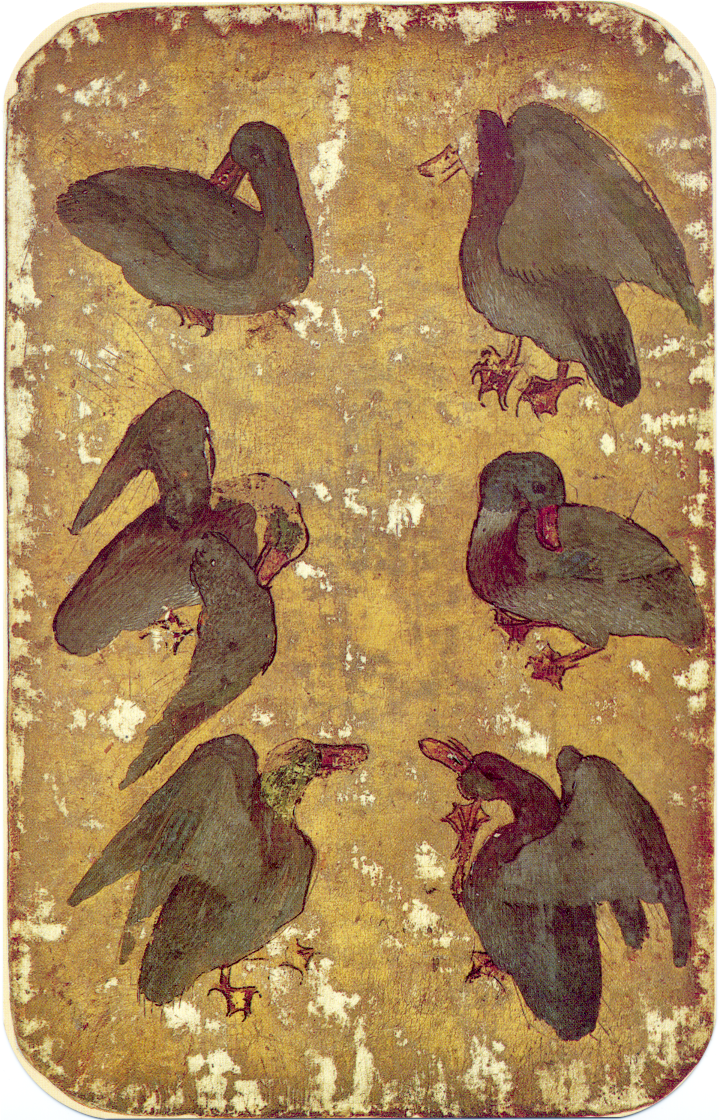14th Century
Although there is some evidence that playing cards were used before the common era in China, the first playing cards in Europe came in the 1370s. Yes, that’s around 30 years before the invention of the woodblock printing press, meaning that these cards were far from easy to produce. As they were all individually hand painted, the cards were expensive and considered a form of entertainment for the upper class only.
the Stuttgart playing cards
Likely made around 1430, the Stuttgart playing cards were not a deck the working class would have likely every played with. It is intricately hand painted on gold ground. The suites include Falcons, Ducks, Hounds, and Stags instead of the well-known hearts, spades, clovers, and diamonds we know today.

The suites are also gendered, the falcons and ducks being represented by kings and knaves, and the hounds and stags having queens and dames.

https://www.metmuseum.org/-/media/images/blogs/in-season/2016/world-in-play/post-4/7-of-hounds.jpg
Considering its value, and how well it has been preserved over the centuries, it is very likely this deck was never used for any games, only as ornament.

Turn of the 15th century
With the invention and proliferation of woodblock printing in the west, the production of playing cards became much less time consuming and thus much less expensive. Simple playing cards became more accessible to the working class.
Bans
As cards became much more available to the working class, the subsequent banning of card playing followed suite, notably in Germany and France. There are a few reasons for this ban, including the Church’s denouncement of cardplaying. The church was strictly against any gambling, describing it as a mortal sin. Being popular with women, cardplaying also became associated with female seduction, which also did not make the Church so happy. Playing during working days became banned as well, it being thought to promote laziness. One dramatic scene said to take place was the public burning of cards by the church in the presence of a poor card maker in St Bernadin of Siena in 1423.
Until next time…
I was really fascinated with this subject, but found I had to hold myself back quite a bit because much of the evolution of playing cards happened after 1450. If you search plainly into google “What was the first deck of cards?” or any variations of this question, you’ll probably get The Cloisters Playing Cards, made around 1480. This is a bit misleading, as with quite a bit more digging, I found The Stuttgart Playing Cards (as mentioned) as well as one other named deck. This isn’t even to mention references to playing cards found far before the common era in the East. Despite this confusion I am quite curious about finding out more about this subject further on in history. Perhaps the next blogpost will be a continuation of the history of playing cards…
References
https://www.britannica.com/topic/playing-card
https://www.wopc.co.uk/history-the-history-of-playing-cards/early-history-of-playing-cards
https://www.metmuseum.org/blogs/in-season/2016/the-stuttgart-playing-cards
Leave a Reply